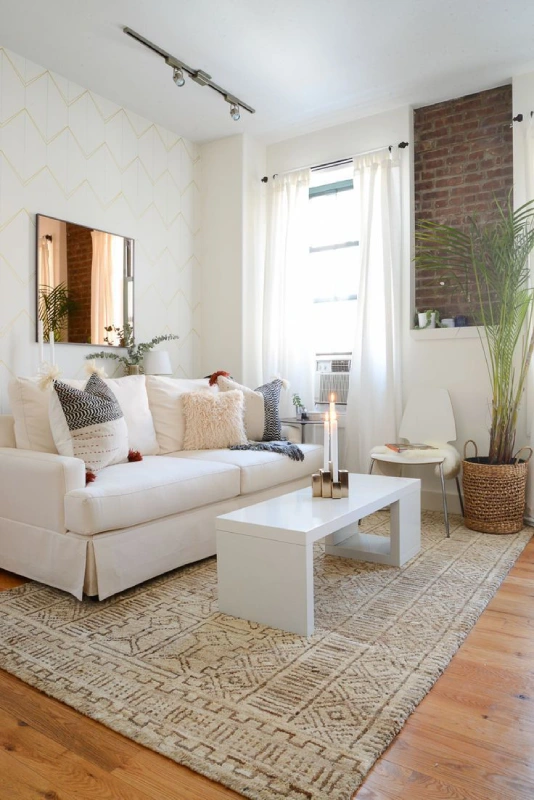Have you ever reflected on the amount of time you spend in closed environments and how they influence you?
Stop and think about your daily routine: from home to the car, from the car to work, from work to the supermarket, from the supermarket to Pilates and back home again.
“90% of our waking time in enclosed spaces. World Health Organization.
Neuroarchitecture is the fusion between neuroscience and architecture, and seeks to understand how the environment influences our mind. It goes beyond aesthetics, as it is based on designing spaces with the objective of positively impacting our emotions, improving our well-being, enhancing our performance and reducing stress.
That’s all there is to it.
Neuroarchitecture: connecting spaces with emotions
From the layout of the spaces to the choice of colors and textures, every detail is selected with the intention of influencing our mood.
For example, the entry of natural light, the play of shadows and the spaciousness of the spaces can influence our feeling of calm, vitality or security.
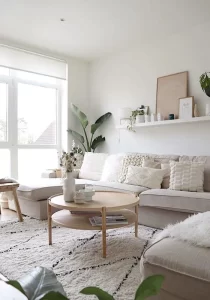
The light
Exposure to natural light, especially in the morning, has very beneficial effects, as it regulates our circadian rhythm, which improves our sleep and mood and, as a consequence, we have more mental clarity and ability to concentrate.
On the other hand, artificial lighting plays a crucial role in our emotions thanks to the color temperature, where warm tones give us a feeling of warmth and cool tones transmit a fresh and energizing atmosphere.
In addition, the intensity of light plays a vital role, as it directly influences neurotransmitters such as serotonin. A bright light generates alertness and a dim light transmits calmness.
Knowing how to make good use of these elements can have a significant impact on our emotional and mental well-being.
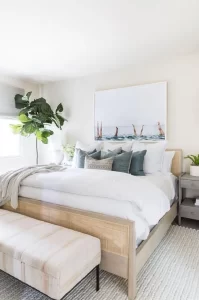
Space distribution
It is not because Marie Kondo says so, but because it is proven that surrounding ourselves with order and organization has a positive impact on our mind, reducing stress and promoting a sense of control and calm.
On the other hand, open spaces promote collaboration and social interaction, while enclosed spaces offer privacy and concentration. There is no right or wrong answer: depending on the objective and sensations we are looking to achieve, one option or the other will be better.
The design that favors accessibility and a natural flow contributes to improved mobility, and creates a sense of openness and well-being. While creating specific zones for various activities (such as work, relaxation and socializing) helps us to better adapt and regulate our emotions, which satisfies different needs and provides us with a versatile and welcoming environment.
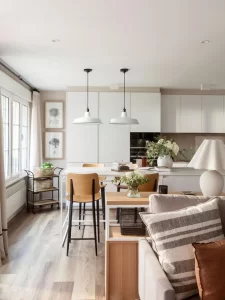
Colors and emotions
There is a relationship between colors and emotions. To this end, neuroarchitecture uses specific palettes to respond to our emotional needs, from warm tones that encourage sociability to soft hues that promote relaxation.
This relationship between colors and emotions has been studied in both psychology and design, and is based on how certain colors can evoke specific emotional responses in each of us.
Although associations may vary culturally and also depend on particular experiences, there are certain generalized tendencies between colors and emotions.
Here is a summary:
RED
– Associated emotions: passion, energy, love, intensity.
– Impact: can increase heart rate and generate strong emotions. It is commonly associated with stimulation and urgency.
BLUE
– Associated emotions: calm, confidence, serenity, stability.
– Impact: blue tends to have a calming effect and is associated with tranquility. It can promote concentration and effective communication.
YELLOW
– Associated emotions: happiness, optimism, vitality.
– Impact: yellow is an energizing color that can evoke feelings of joy and positivity. However, in excess, it can be overwhelming.
GREEN
– Associated emotions: nature, freshness, growth, balance.
– Impact: green is relaxing and is commonly associated with nature. It can have a calming and rejuvenating effect.
ORANGE
– Associated emotions: energy, warmth, enthusiasm, creativity.
– Impact: similar to red, orange is stimulating and can evoke positive and active emotions. It is often used to create a cozy atmosphere.
PURPLE
– Associated emotions: luxury, mystery, spirituality, creativity.
– Impact: purple can have a calming effect similar to blue, but is also associated with creativity and sophistication.
WHITE
– Associated emotions: purity, simplicity, clarity.
– Impact: white is commonly associated with purity and simplicity. It can create a sense of space and cleanliness.
BLACK
– Associated Emotions: elegance, formality, mystery.
– Impact: Black is a versatile color that can evoke emotions of elegance and formality, but can also feel oppressive if overused.
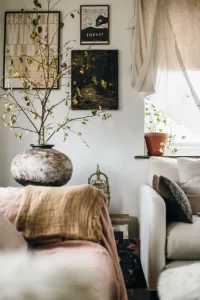
Neuroarchitecture is here to stay
Emotion-based design is constantly evolving and is plunging into a promising future with innovations that will transform the way we design and experience our spaces. These are some of the most important trends and innovations:
Sustainable environmental design
Sustainability will be an integral part of future Neuroarchitecture. The use of eco-friendly materials, the optimization of energy efficiency and the integration of green spaces in built environments will be trends that not only benefit the environment, but also emotional health.
Design based on cognitive data
The collection and analysis of cognitive data will allow the design of spaces adapted to specific emotional patterns. Designers will be able to use information about how people interact and feel in an environment to create places that continuously improve emotional well-being.
Work environments: focus on mental health
The design of offices and work environments will focus on specifically addressing mental health. Spaces that encourage concentration, relaxation and social connection will be key to promoting productivity and emotional well-being at work.
In short, the neuroarchitecture of the future will be characterized by its personalized approach, technological integration and commitment to sustainability.
Emotion-based design transforms our perception of spaces and opens up an essential dialogue about how design can help us feel better. Understanding the interaction between our mind and our environment allows us to create places that improve our quality of life.
Start digging into your space by downloading my free guide
here.
If you have any doubts or questions, you can write to me at hola@laurahousecoach.es.
A hug,
Laura
